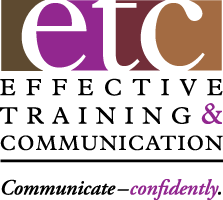My rant last month generated some lively and interesting comments. Always a good thing. Some readers asked for immediate help, which I provided privately. Others were content to wait until this month for part II – ‘Dog & Pony Show Best Practices’ … or ‘How to Avoid a Team-Delivered Presentation (TDP) from Hell!’
Let’s assume you asked all the right questions suggested last month and decided to create a TDP anyway. Good for you. Now, maximize its positive audience-centric impact by embracing these five Best Practices learned from All-Star Presenters:
- The Anchor/Field Reporter Approach. Instead of leading off with the biggest dog on the team, passing the baton to each person in turn and ending with the last speaker, try this approach. Have the best presenter act as the ‘Anchorperson’, delivering the all-important Introduction and Conclusion and passing the baton to the content experts as if they were ‘Field Reporters’. The Anchor would introduce each speaker, and then summarize his or her points before transitioning.
- The Anchor-Only Approach. If the Anchorperson can adequately handle all the content details, even better. He or she can introduce the rest of the Team and pass specific questions to them, but otherwise deliver all the content. This approach can showcase Team members or indicate the full resources involved to a limited extent, while maximizing the impact of the actual presentation in the hands of the best presenter.
- Practice the Baton Pass. Most relay races are won or lost with the pass off. Effective TDPs practice smooth baton passes so the whole message flows seamlessly and purposefully from one speaker to the next. Speaker A summarizes his or her key points, previews Speaker B’s points and passes off. Or the Anchor summarizes Speaker A, transitions to Speaker B and introduces him or her. Everything happens on purpose and for a purpose. And it looks very smooth and natural to the audience.
- Practice for Time. Even if the speakers can’t practice together live, they can go over content in detail via email or conference call. And practicing by phone or video teleconference can work quite well. Each speaker additionally practices his or her segment several times with a stopwatch to make sure it meets requirements and doesn’t result in the entire message going over.
- Determine Q&A Strategy. Depending on the content flow and relationship of segments to each other, speakers can entertain questions at the end of each of their segments rather than at the end of the entire message. Or, the Anchor can manage the segment Q&A. Taking questions at the end of each segment also avoids ending the entire presentation with the often-clumsy Q&A session.
So, if you’re still considering a TDP, do what you can to maximize the upside and minimize the downside of this technique. Thorough planning and preparation are essential for success … and for avoiding Dog & Pony Shows from Hell! Your audiences will really appreciate your efforts.
